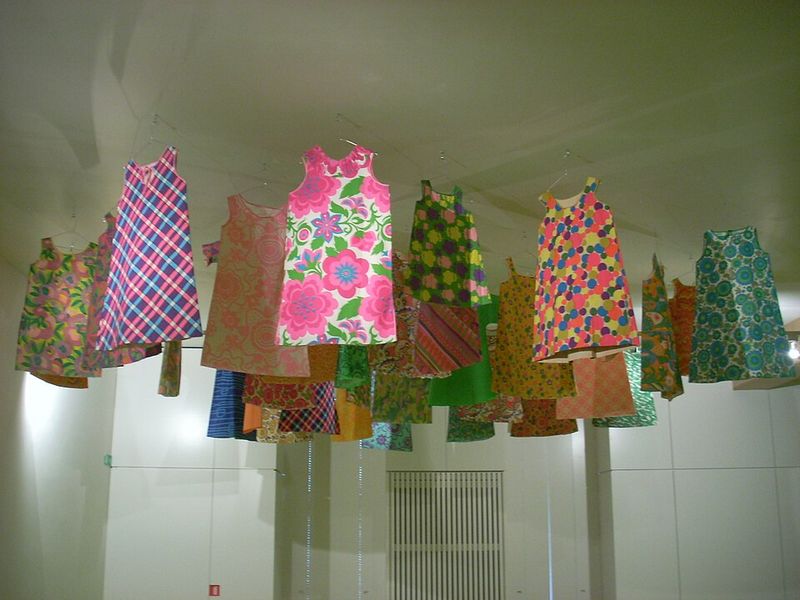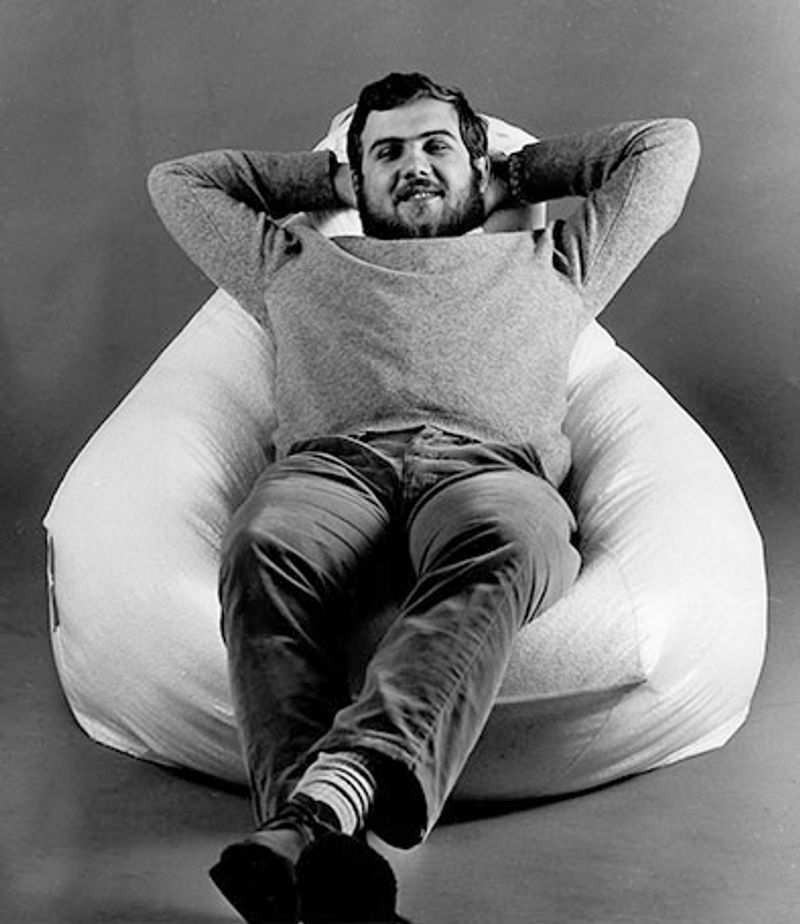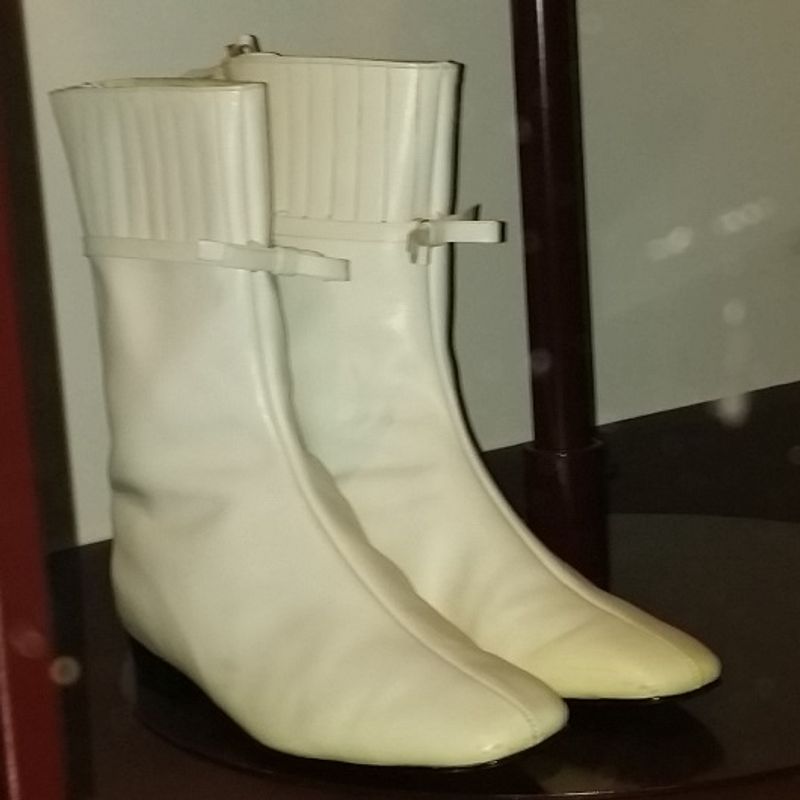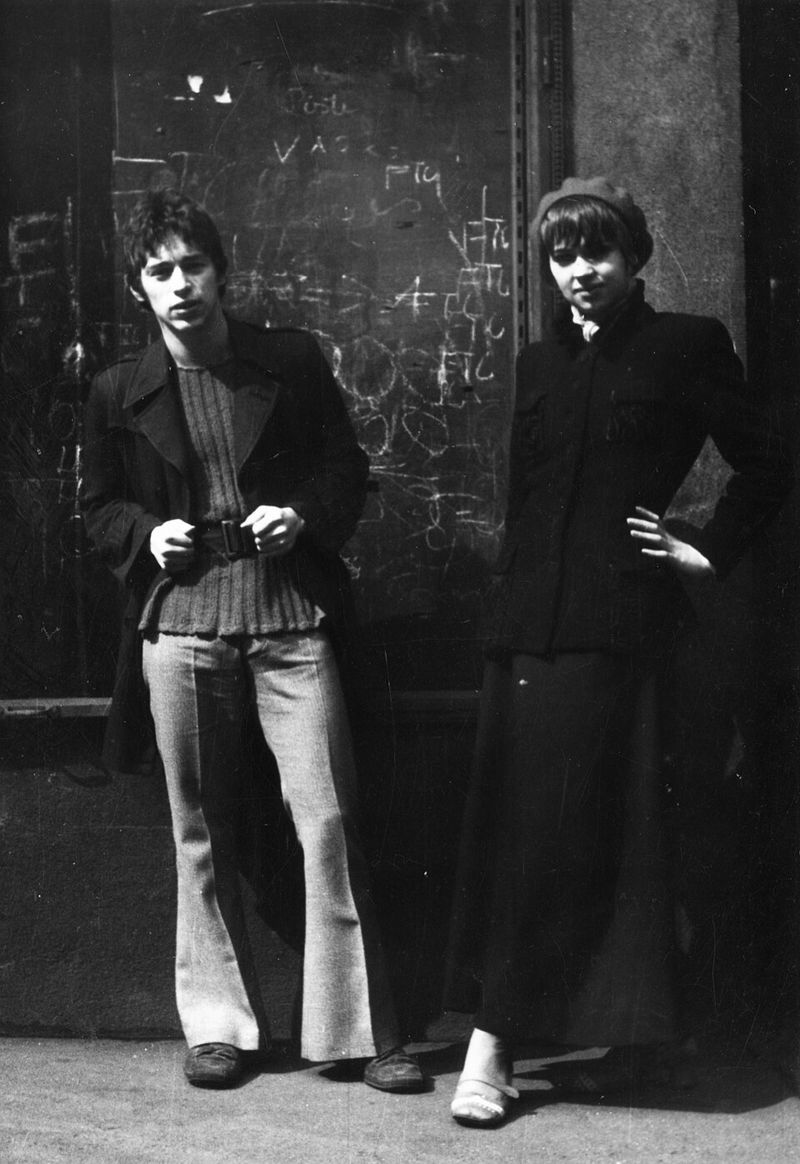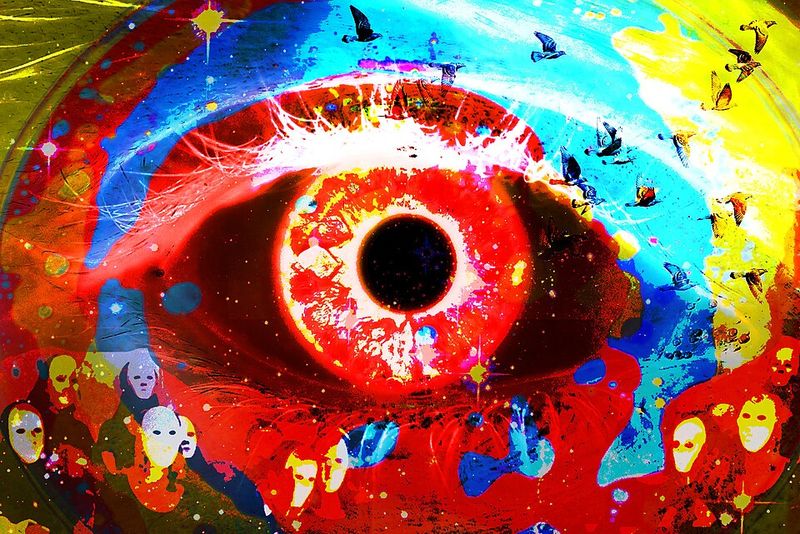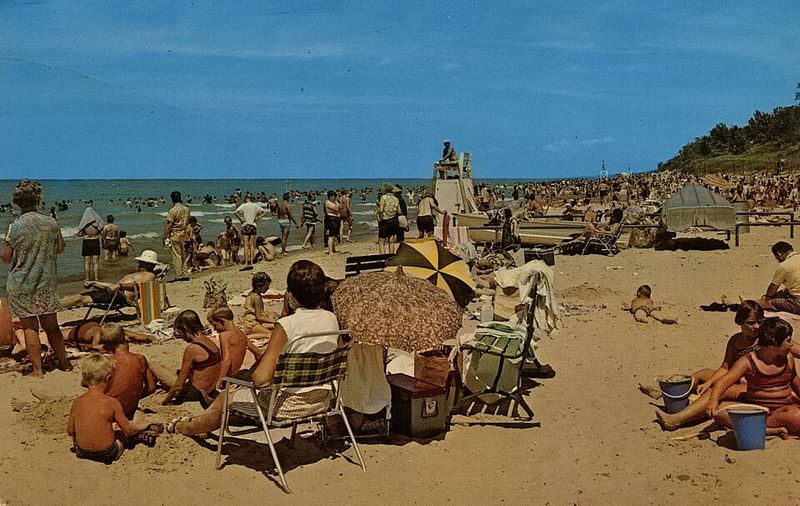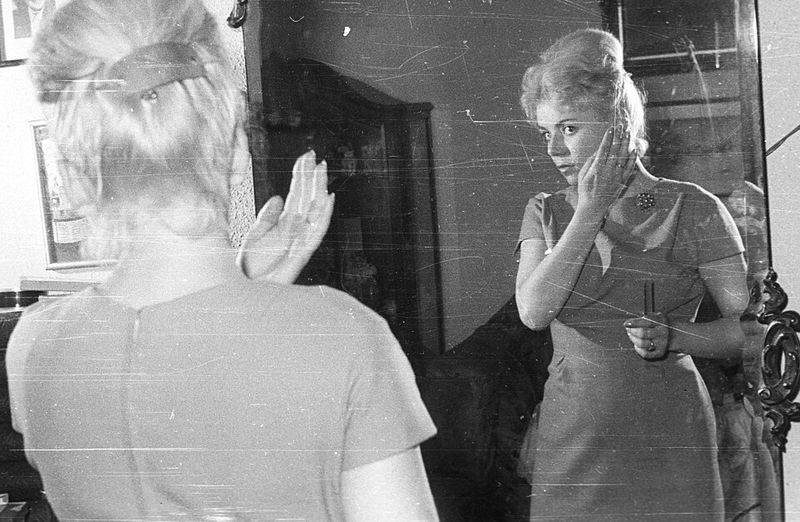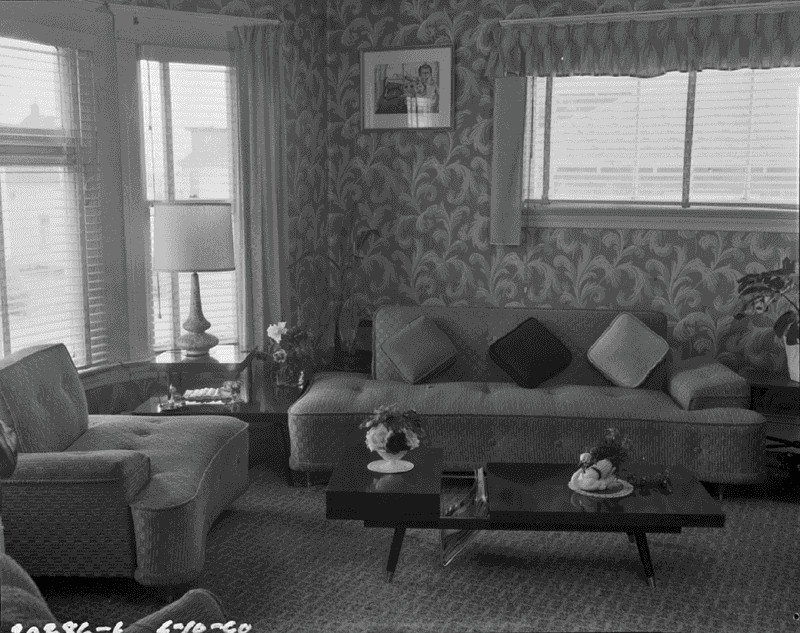The 1960s were a kaleidoscope of daring style, experimental lifestyles, and pop-culture detours that still surprise us today. From disposable fashion to furniture you could inflate, the decade embraced novelty with fearless enthusiasm. Some trends were ingenious, others delightfully absurd – and many captured the restless energy of a generation reinventing everything. Dive in to relive 14 strange but true fads that turned everyday life into a groovy spectacle.
1. Paper Dresses
Paper dresses promised modern convenience with a wink – wear today, toss tomorrow. Crafted from cellulose blends, they flaunted pop-art prints, bold color blocks, and A-line silhouettes perfect for go-go nights. Advertisers pitched them as hygienic, affordable, and thrillingly new. Reality proved flimsier: they tore, couldn’t be washed, and melted under mishaps. Still, the novelty enchanted shoppers and magazines alike. Brands printed promotions directly onto the dresses, turning bodies into billboards. Their brief blaze epitomized the decade’s throwaway futurism, where fashion became experiment, spectacle, and conversation starter in one crisply rustling swish.
2. Beehive Hairdos
Rising like architectural wonders, beehive hairdos transformed everyday women into height-defying icons of glamour. Stylists teased strands to the heavens, then shellacked them with industrial-strength hairspray for immovable perfection. These sculpted cones signaled sophistication, celebrity sheen, and a fearless embrace of excess. Maintenance was epic – sleeping upright, strategic scarves, and weekly salon pilgrimages were common. Yet the beehive’s audacity fit the era’s bold mood. It framed cat-eye eyeliner, paired with crisp mod dresses, and announced presence from across a room. Even today, it remains a towering symbol of ’60s confidence, ingenuity, and style-as-spectacle.
3. Inflatable Furniture
Inflatable furniture floated into homes as a space-age dream rendered in PVC. Transparent chairs and bubble sofas promised portability, affordability, and instant cool. The look shouted future-forward: slick, glossy, and neon-accent friendly. But squeaks, slow leaks, and sticky summer seating plagued daily life. Students and trendsetters still loved the irreverent vibe – furniture you could blow up felt delightfully rebellious. It paired perfectly with psychedelic posters and shag rugs, staging rooms like youth-infused lounges. While practicality deflated, the aesthetic left a lasting imprint on pop design, reminding us that whimsy sometimes matters more than durability.
4. Go-Go Boots
Go-go boots stomped into the spotlight with patent shine and unapologetic swagger. Usually white and knee-high, they framed the era’s youthful legs beneath minis and mod shifts. Dancers in glass-walled cages made them legendary, but street styles adopted them equally fast. The boots mixed futurism and flirtation, channeling independence through every kick and pivot. Designers tweaked heels, zippers, and toe shapes to amplify attitude. Pop TV and music shows immortalized their rhythmic flash. More than footwear, go-go boots became a statement of movement – practical enough for a night out, iconic enough to define the scene.
5. Smoking for Weight Loss
In the ’60s, cigarette ads blithely pitched smoking as a slimming secret. Slogans urged reaching for a cigarette instead of sweets, implying effortless discipline in a stylish gesture. Glamorous models and crisp suits masked health realities with seductive cool. The message slipped into daily routines, especially among women policed by fashion’s narrow ideals. Though doctors were raising alarms, marketing momentum remained powerful. These campaigns reveal how culture can repackage risk as lifestyle. Today, they stand as cautionary artifacts – slick visuals selling control while hiding costs – underscoring the era’s complicated dance between image and truth.
6. Lava Lamps
Lava lamps cast molten dreams across ’60s living rooms and dorms. Wax blobs rose and sank in hypnotic loops, syncing with psychedelic records and late-night conversations. The motion promised calm, curiosity, and cosmic possibility – mini universes in glass. Designers sold them as conversation pieces; they delivered instant atmosphere. Their groovy glow softened hard edges of plastic furniture and concrete modernism. Teenagers adored the trance; adults indulged the novelty. More than décor, lava lamps embodied the era’s inner journey – meditative and mind-bending, yet accessible. Flip the switch, dim the lights, and let time melt into color.
7. The Twist Dance Craze
The Twist turned living rooms into dance halls with a simple swivel of the hips. No partner contact, no fancy footwork – just rhythm and joyful torque. Chubby Checker’s hits ignited a nationwide whirl, from teen parties to television shows. Parents joined in, bridging generations through shared movement. The Twist broke ballroom conventions, empowering beginners and wallflowers alike. Clubs embraced the craze, then brands latched on, selling Twist-branded shoes, records, and lessons. Though trends moved on, its liberating simplicity remains. Spin, drop, and grin – the Twist democratized dance, proving that fun beats technique when the beat is irresistible.
8. Bell-Bottoms
Bell-bottoms flared into mainstream style, translating naval practicality into pop swagger. Wide hems balanced platform shoes, elongating legs and dramatizing every step. Denim versions dominated, but corduroy and prints added personality. The silhouette signaled rebellion, community, and a break from tailored conformity. Musicians embraced the look, amplifying its star power on TV stages. As hems widened, creativity did too – patchwork, embroidery, and frayed edges told personal stories. Bell-bottoms weren’t just pants; they were flags of identity. Even after trends tapered, their rhythm returns cyclically, reminding fashion that flow and freedom never truly go out.
9. Psychedelic Wallpaper
Psychedelic wallpaper transformed walls into portals, flooding rooms with spirals, paisleys, and vibrating color fields. Influenced by art nouveau echoes and LSD-era graphics, patterns pulsed with kinetic energy. Designers chased visual intensity that challenged polite décor rules. Bedrooms and lounges became immersive canvases for self-expression. The effect could be thrilling – or dizzying – depending on mood. Under colored bulbs or lava lamp glow, surfaces seemed to breathe. While subtlety suffered, personality soared. Even today, a single accent wall revives that adventurous spirit, proving that home design can be both shelter and spectacle, a visual soundtrack for changing times.
10. Tanning with Baby Oil
Chasing golden glow, many sunbathers slathered baby oil before stretching out on ’60s beaches. The slick sheen intensified rays, promising deep tans fast – long before SPF entered everyday vocabulary. Radios crackled, umbrellas dotted sand, and bronzed skin telegraphed carefree leisure. Risks went largely unmentioned in popular culture. Magazines glamorized the look, nudging readers toward shine over safety. While hindsight winces, the ritual captures the era’s sun-drenched optimism. Today, we trade oil for sunscreen and shade, but the image endures: towels, surf, and a bottle glinting in the light, emblematic of summer’s siren call.
11. Edible Beauty Products
Edible beauty blurred boundaries between cosmetics and candy. Lipsticks flavored like strawberry or bubblegum turned touch-ups into tiny treats, while scented products hinted at playful indulgence. The pitch was charm and flirtation – a kissable finish you could taste. Packaging leaned pastel and pop, matching the era’s love of novelty. Practicality varied, but curiosity sold units and magazine space. These items reveal a decade experimenting with sensory overlap, where appearance, aroma, and flavor mingled. Though the craze faded, its influence lingers in today’s tinted balms and dessert-scented glosses, proof that whimsy sweetens the beauty ritual.
12. Pet Rocks
Why bother with a pet that needs feeding when you can have a rock? This quirky fad took off in the late ’60s, offering companionship without responsibility. Pet rocks were sold in boxes with breathing holes and often came with humorous instruction booklets.
The simplicity and humor of the trend made it wildly popular. People decked out their rocks with googly eyes and painted smiles, turning them into unique characters.
Though the craze was short-lived, it perfectly encapsulated the playful spirit of the decade, celebrating creativity in the simplest of forms.
13. Mood Rings
Ever wondered what color your mood is? In the late ’60s, mood rings became all the rage, claiming to reveal the wearer’s emotional state. These rings contained liquid crystals that changed color based on temperature.
The promise of emotional insight was fascinating, and mood rings quickly became a conversation starter. Whether a deep blue signaled calm or a fiery red indicated excitement, these rings seemed to hold the secrets of the soul.
Though scientifically dubious, the allure of understanding one’s mood in a glance captivated a generation eager for self-discovery.
14. Plastic Couch Covers
Plastic couch covers promised preservation over comfort, sealing sofas in crinkly armor. Families prized pristine upholstery, and clear vinyl showcased patterns while defending against spills. The experience? Sticky in summer, chilly in winter, and always squeaky. Yet the covers symbolized thrift and pride, keeping investments flawless for guests and holidays. Many households recall the rustle of sitting down and the relief of standing up. They also echo postwar consumer values: buy nice things, then guard them fiercely. Today, they’re a nostalgic punchline – yet undeniably effective – capturing a practical streak beneath the decade’s flamboyant surface.

